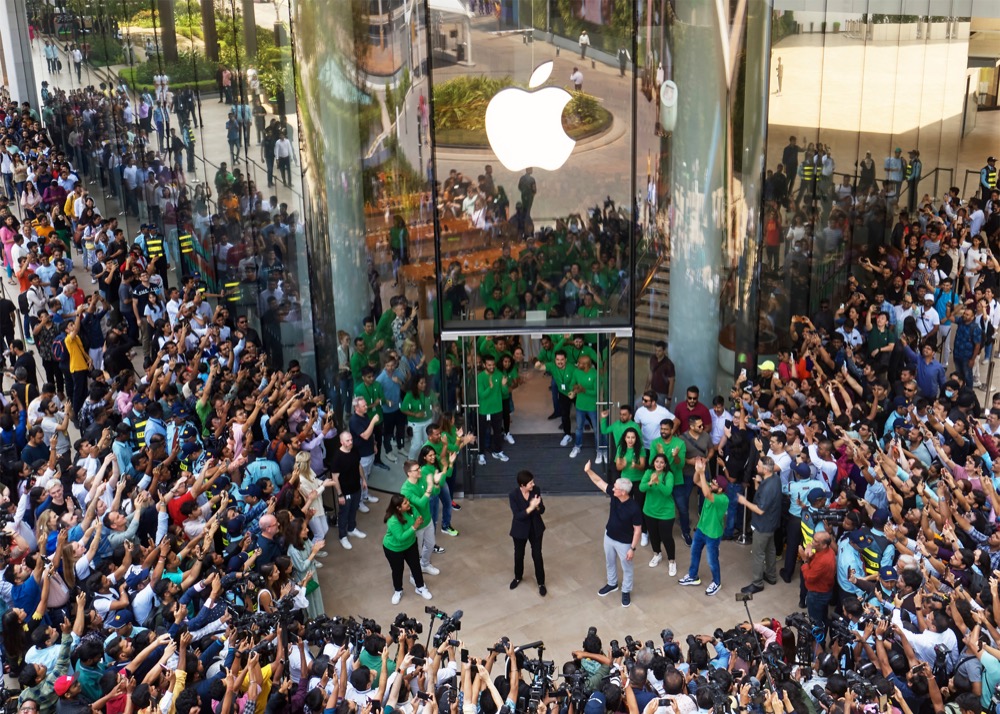Apple builds highly adaptable supply chain for complex times

Crowds came to the opening
Apple’s complex strategy to reduce its reliance on China and forge a stronger and more resilient supply chain is becoming a little easier to see – and it seems to confirm earlier speculation.
Simplicity is complex
The one thing we all know is the extent to which Apple is gearing up every aspect of its operations in India. This extends from new retail stores to development hubs and involves interesting changes in the company’s corporate management.
It also means Apple is working with India’s government and partners toward the eventual goal of manufacturing around 50% of all iPhones in India.
Supporting these efforts Apple is also engaged in various CSR schemes, from saving mangrove forests to investing in green energy.
Within these plans, Apple has been working closely with India’s government, which is attempting to attract tech firms to manufacturing products in India with a range of subsidies and investments under what is being called the PLI scheme.
iPhones come from India, Macs come from?
Now, the news here is that while Apple and its partners have been taking advantage of that government subsidy to get iPhone manufacturing off the ground in India, they seem far more reticent to do so for other Apple products.
India’s government recently announced a new PLI scheme designed to convince PC manufacturers to start building their machines in India.
Under the scheme India’s Ministry of Electronics and IT is offering 17,000 crore (approximately $1.8b) in subsidies to help convince companies such as Dell, Apple, and Samsung to shift PC production to India.
Is that enough?
That’s a nice amount of cash, though it must be considered in context.
Foxconn, for example, is investing around $1.5b (13,600 crore) to create an iPhone assembly line just outside Bengaluru. That factory is expected to begin production in April 2024.
It is also spending $200 million on a factory just for AirPods production, so it is arguable that the available funding pot doesn’t go sufficiently far. To be fair, the scheme was only announced very recently and the PC manufacturers are still considering it.
Back to the future
But what seems to be the case is that Apple isn’t chasing the opportunity of this fresh scheme. This suggests it wants to avoid the error of putting all its production eggs in one basket, but to build out a network of supply chains. That’s the model we had already anticipated following earlier statements from noted Apple analyst, Ming-Chi Kuo, who last year told us:
- Apple wants to make iPhones in India.
- Apple wants to make more Macs in Thailand, at present most are made in China.
- Supporting this, Apple wants to supply components from both inside and outside China. Non-Chinese markets to be supplied from outside China.
Subsequent to this we have heard that Apple is also building out manufacturing in Vietnam, which makes it possible we’ll see Macs coming out of Thailand and Vietnam and iPhones from out of India, with China also in the mix.
This makes sense as it makes Apple’s supply chain far more resilient.
A multichannel world with shifting relationships
While the company seems to have managed many of the recent crises very well, there is no denying that supply chain problems have impacted its bottom line and slowed down new product introductions.
This in turn has damaged the company’s bottom line, so it’s no big surprise that the company wants to base different parts of its chain in different places.
Apple is expected to begin making Macs in Vietnam and Thailand in 2023.
This suggests at least some of the new Macs the company is likely to introduce at WWDC 2023 will be made there. It’s also important that India’s free trade agreement with Vietnam means Macs made in the latter nation can be sold in the other without duties.
But the one big take away must be that Apple will not allow its business to be left totally in thrall to production in one key nation again.
Please follow me on Mastodon, or join me in the AppleHolic’s bar & grill and Apple Discussions groups on MeWe.




